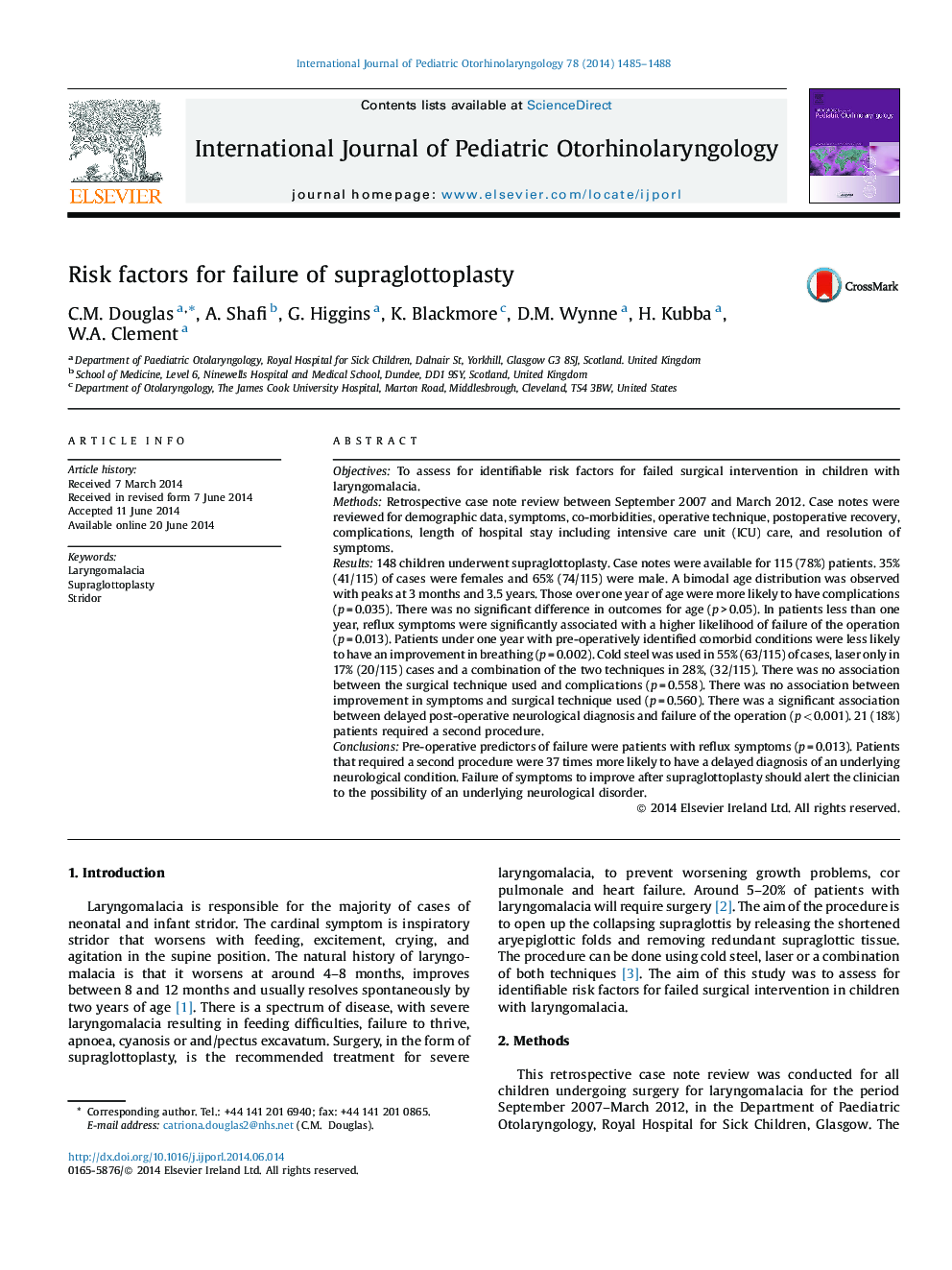| Article ID | Journal | Published Year | Pages | File Type |
|---|---|---|---|---|
| 4112816 | International Journal of Pediatric Otorhinolaryngology | 2014 | 4 Pages |
ObjectivesTo assess for identifiable risk factors for failed surgical intervention in children with laryngomalacia.MethodsRetrospective case note review between September 2007 and March 2012. Case notes were reviewed for demographic data, symptoms, co-morbidities, operative technique, postoperative recovery, complications, length of hospital stay including intensive care unit (ICU) care, and resolution of symptoms.Results148 children underwent supraglottoplasty. Case notes were available for 115 (78%) patients. 35% (41/115) of cases were females and 65% (74/115) were male. A bimodal age distribution was observed with peaks at 3 months and 3.5 years. Those over one year of age were more likely to have complications (p = 0.035). There was no significant difference in outcomes for age (p > 0.05). In patients less than one year, reflux symptoms were significantly associated with a higher likelihood of failure of the operation (p = 0.013). Patients under one year with pre-operatively identified comorbid conditions were less likely to have an improvement in breathing (p = 0.002). Cold steel was used in 55% (63/115) of cases, laser only in 17% (20/115) cases and a combination of the two techniques in 28%, (32/115). There was no association between the surgical technique used and complications (p = 0.558). There was no association between improvement in symptoms and surgical technique used (p = 0.560). There was a significant association between delayed post-operative neurological diagnosis and failure of the operation (p < 0.001). 21 (18%) patients required a second procedure.ConclusionsPre-operative predictors of failure were patients with reflux symptoms (p = 0.013). Patients that required a second procedure were 37 times more likely to have a delayed diagnosis of an underlying neurological condition. Failure of symptoms to improve after supraglottoplasty should alert the clinician to the possibility of an underlying neurological disorder.
